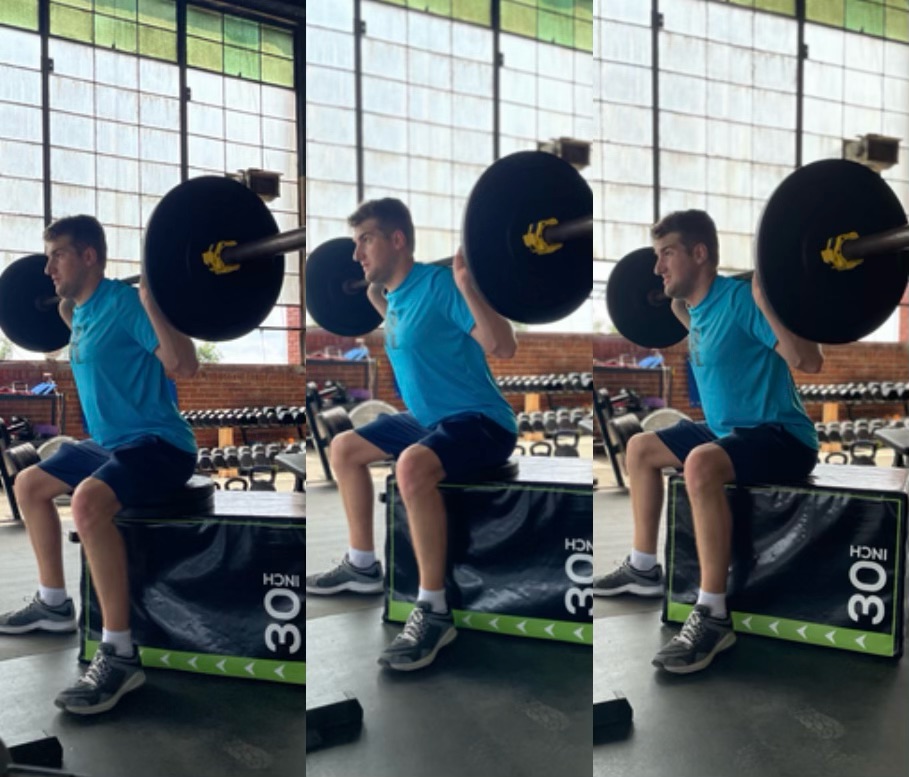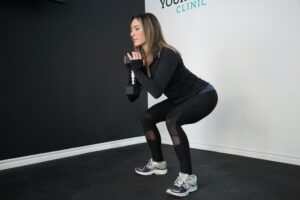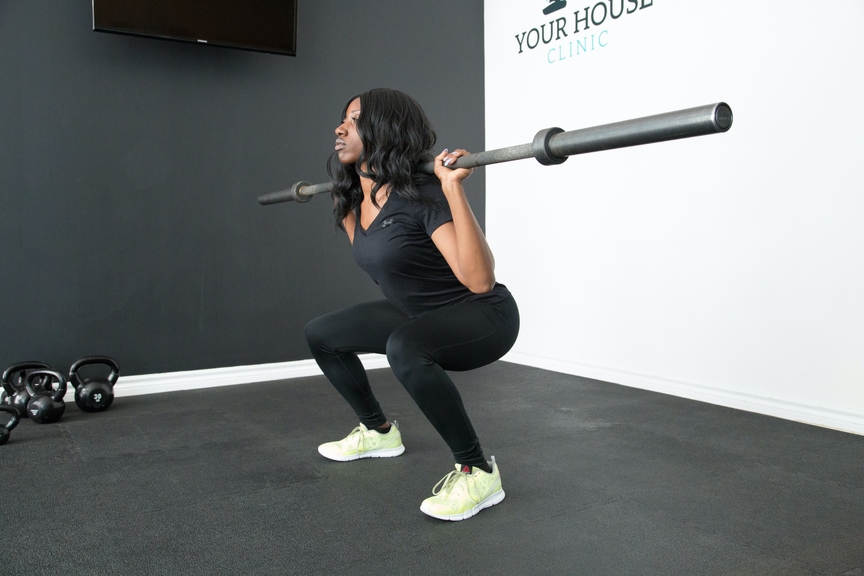How to Perform a Proper Squat
Okay, so you want to perform a proper squat, that’s great! The squat is a fundamental movement pattern that is integral to how we move.
Throughout this article I will cover various variations of the squat, starting with body weight and then moving along to dumbbells and barbells. More details can be provided in a one on one setting with a personal trainer at Ruffier Fitness if required.
The Body Weight Squat
The most basic of the types of squats is the body weight squat. You’ll set up by standing with your feet roughly shoulder width apart or slightly wider. Begin by pushing your hips behind you and then starting to bend your knees. Imagine how your hips would respond if you were pulled by your back most belt loop. This will start to hinge your body which will put the majority of your weight on your heels.
As you go further into the hinge being to bend at your knees and sit down as low as is comfortable for you. When you reach the bottom of the movement you’ll want to drive through your heels and push you hips forward to return to the starting position.
Make sure that your entire foot remains on the ground during the duration of the movement. A common mistake that people tend to make is putting too much of their weight on their heel which allows their toes to lift off the ground and should be avoided.
Squats and Depth
Before I go any further I want to discuss the proper depth on a squat. This is a hotly debated issues that people have varying opinions on. The short answer to “how deep should I squat?” is a simple one; You should squat as deep as is comfortable without compromising form. We all have very different and unique morphology, mobility and injury history and all of these factors play into the depth of your squat.
If you struggle with depth and would like to increase your depth you can slowly achieve this through box squats. Box squats are as simple as they sound, you set up a box and squat down to it. This allows you to squat wherever your comfortable and over time you can decrease the height of the box to help you get comfortable squatting to a lower depth.
Proper Squat variations
Now that we’ve covered the movement patter of the squat we’ll discuss various ways to load the squat. You can squat using dumbbells, barbells, landmine attachments, belt squats if you have access to one as well as other variants.
None of these variations are better or worse than others and some variations will be utilized to load the squat in different ways to avoid or limit an existing injury. For some people loading the squat isn’t an option due to an existing injury which will make body weight squats the best option for them. Check out Michael and his perfect barbell box squats below!

More Dumbbell Squat Variations | Goblet Squats
One of the most common is the goblet squat pictured to the right. This is where you hold a single dumbbell by one end(while the other dangles) in front of your body. You should be positioned that when you sit down into the squat your elbows will nearly touch the tops of your thighs.
Keeping you back straight and chest forward you’ll drive through your heels and hips to return to the starting position. Another dumbbell variation is the suitcase squat; this is where you’ll hold a single dumbbell to your side while you perform a squat. Loading the squat unilaterally like this will increase the core and especially oblique recruitment in the movement. There are plenty of other dumbbell variations, but we won’t go further into those today.

Proper Barbell Squat | More tips on a Proper Squat
Now before you begin to sink into the squat you want to make sure your back and core(really everything for that matter) is “tight” and ready to handle the weight as you control it all the way down and all the way back up. To do this you’ll want to squeeze the bar in your hands and try to bend it around your shoulders, the bar obviously won’t bend but this motion will create tightness in your back and shoulders and help you keep your chest from caving in, causing your shoulders to round forward.
Brace through your core, this will create increased intra-abdominal pressure that will help stabilize your core throughout the movement and better protect you while lifting heavier loads. If this type of bracing is a new concept to you think of it as squeezing your abs as if you’re about to brace to take a punch to your gut.
You’ll want to maintain this brace throughout the whole movement and take shallow breaths while maintaining the brace. Now that you have set your grip, found your stance, created tension in your shoulders and braced your core you’re ready to initiate the squat. Begin just as we discussed earlier by pushing your hips down and back, sinking to your desired depth, and then returning to the standing position.
Now these are only the basics to getting started with performing a barbell squat. If you find yourself interested in the sport of Power lifting you’ll soon realize that there are a lot more things to take note of and you’re depth will have to be low enough to fit the standards of whichever power lifting federation you compete in.
How to do a Proper Squat with Ruffier Fitness
Hopefully this article has been helpful in understanding not only how to perform a proper squat, but helping you understand the different variations of the squat. Again this is more of an introduction to squatting.
I could write pages and pages discussing more variations of squats, different bar placements, changes in width and stance as well as a lot of other nuanced things to thing about while squatting, but it’s always better to show you myself. Sign up for a free consult below for in person personal training or online personal training.


